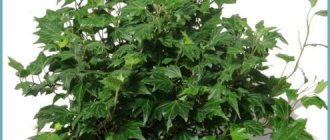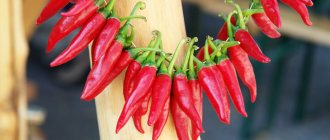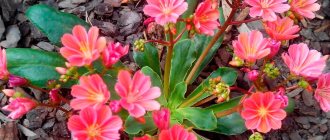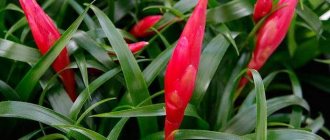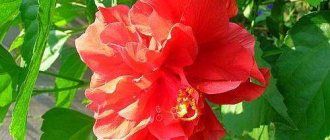Garden ivy: how to plant, care and propagate
Ivies are unpretentious and pliable.
The plant can be grown as a ground cover, as a lush carpet on the ground, and as a climber. Heders are easy to care for - after planting, it is enough to water, sometimes weed, and mulch the plant in the fall. You can propagate ivy at home on your site by seeds, shoots, cuttings and layering. The shoots of the plant themselves are fixed to the supports with the help of aerial roots, without requiring additional support. The plant is an evergreen perennial vine with green or variegated lobed leaves - dense, with heart-shaped bases. In cultivation, common ivy is usually used as an ornamental plant, less often Colchian ivy.
Hederas bloom at the age of 10-12 years with small, inconspicuous, unpleasant-smelling flowers. Their berries are poisonous to humans. Lianas bloom in late autumn. The plant can have unisexual and bisexual flowers. Male and bisexual stamens have 5 stamens, while females have a pistil. The ivy fruit is the size of a pea. Inside there are 3-4 wrinkled, light-colored seeds.
Hedera is not a parasitic plant. It does not harm the trees it braids. Ivy is attached to the support by aerial roots. Without the need for nets and trellises, it is able to climb rough stone walls on its own, so it is advisable to use it when landscaping unplastered stone walls.
If you are interested in garden vacuum cleaners, we recommend checking out the website https://worcraft.com.ua
Types of garden ivy:
View
Description
Varieties
Common ivy (Hedera Helix)
A powerful evergreen shrub with vines up to 25 m long, covered with leathery glossy leaves with a golden marbled tint. A fast-growing vine that can create a real curtain of foliage. Many varieties have been developed, varying in shape, size and color of leaves.
- Buttercup - grows slowly, the leaves are pale green, turning yellow in full sun.
- Pedata - the variety is called “bird’s foot” because of the shape of the leaves with a sharply protruding middle lobe; the plates look like bird’s feet.
- Glacier is a variety with variegated leaves and moderate growth. A creamy tint clearly appears on the grey-green plates.
- Atropurpurea – has dark green leaves that turn purple in autumn
Persian ivy (Hedera colchica)
Large-leaved, ideal for covering walls. To ensure that the curtain made from this plant always looks attractive, it will have to be trimmed regularly.
Dentata variegata – leaves 15 cm in diameter, light green, speckled, with cream edges
Iberian ivy (Hedera Iberica)
Leaves in the shape of a clearly cut heart with beautiful veins
Deltoidea - suitable for vertical gardening and growing in pots. Grows wider than tall
Caucasian ivy (Hedera Caucasicum)
Frost-resistant, withstands frosts down to -20. Late honey plant, blooms in November, when there are very few flowering plants
Grow indoors:
- Indoor ivy - well suited for dark, cold and dry rooms. The plant has leathery, durable, smooth leaves, uniform, dark green, with a lot of chlorophyll. Such plates can be satisfied with even a small amount of light.
- Wax ivy - suitable for insufficiently lit and humid rooms with a temperature of 20-25 degrees. This species has thinner and more delicate leaf blades of different shades of green.
Ivy grows in almost any soil, in the sun and in dense shade. The plant is viable, surviving even in places poorly adapted for it. Hedera has many variegated forms. They are all very light-loving. In the shade, variegated ivy will not die, but will turn into ordinary, green ones.
Ivy is a moderately heat-loving plant. It grows best at a temperature of 14-17 degrees. In winter, plants are kept at a temperature of 10-15 degrees, but they will not die at higher temperatures. In the southern regions, heders winter well under the crowns of large trees.
Ground cover specimens overwinter better than those grown in a vertical culture.
Ivy loves frequent spraying and is very responsive to feeding. In summer it is watered abundantly, in winter - occasionally, but the earthen lump should not dry out. In the hot season, plants are fertilized every 10 days with a mineral composition containing nitrogen, phosphorus and potassium, diluting 10-15 g of fertilizers in 10 liters of water. In winter, fertilizing is not carried out. The lower the air temperature, the less often you need to water and spray. If the leaves turn yellow and fall off, it means the plant does not have enough moisture.
Mulch is useful both in the fall (as a winter shelter) and during the growing season, in the warm season. Porous organic matter protects the soil from drying out and, in rainy years, from rotting. The mulch is poured in several stages, each time spreading it over the surface of the earth in a thin layer, trying not to touch the low-lying leaves. After several additions, by winter, mulch will be able to protect the roots from frost.
In the spring, when the snow melts, there is no need to rush to cut off frozen shoots. It is better to postpone the procedure until the summer, when active sap flow stops. Extensive cuts are covered with varnish.
Hedera blooms if it can get out of the shadows into the light. The berries hang on the plant all winter and ripen only next spring.
When the ivy grows too much, its branches can be trimmed. The leaves stay on the vines for a long time. The shoots are laid on the ground and covered with earth or pressed down with garden pins, after which they will take root and new branches will grow from them. In order for the ivy to branch better and not lose its decorative appearance, its shoots are pinched by hand several times a year, and heavily exposed vines are shortened by pruning.
Types of home ivy with photos and names
House ivy has several varieties. Thanks to this, every gardener can choose the most suitable option for himself.
The following varieties of plants are found in household use:
Common ivy (Hedera helix)
The most common type of ivy. Its peculiarity is that the plant sprouts attach to the surface that is close to it. Thanks to this, you can form a beautiful shape for the plant.
Canary ivy (Hedera helix ssp. canariensis)
It has large dense leaves and variegated colors. An adult leaf blade reaches 12 cm. The peculiarity of the plant is that it does not have aerial roots, and therefore needs constant support. In order for ivy to look lush and neat, it must be pinched once a year and formed into the correct shape. Plants prefer good lighting and do not like low temperatures. The adult flower has red stems.
Despite the fact that ivy is not a capricious plant and can grow in a darkened room, it is still necessary to provide proper care. It is not complicated and does not require much effort. Under favorable and comfortable conditions, ivy grows into an elegant and beautiful vine.
Colchis (Caucasian) ivy
The variety has thin shoots and large shiny leaves. The plant does not need constant lighting and tolerates dark places well.
Ivy variety Lize
It is distinguished by the unique color of its leaves and also has a tall size.
Currently reading:
- Rubber-bearing ficus - care and propagation at home, photos of species
- Dieffenbachia at home, care and reproduction, photo
- Epipremnum - growing and care at home, photos of species
- Chinese hibiscus - planting, care and propagation at home, photo
- Ficus sacred - growing and care at home, photo
Planting, care and propagation of garden ivy
For residents of the middle zone, hedera, an unpretentious evergreen ivy, is more familiar as a popular hanging plant for the home. But in the southern regions of the country it is garden ivy.
Huge thickets of this culture can be found in the Crimea and the Caucasus. As the ivy grows, it climbs inaccessible slopes and the walls of houses, covers the slopes with a dense carpet, and its shoots hang from the trees. Plants belonging to perennial evergreen vines are not capricious, not demanding in terms of growing conditions and care. They grow quickly and readily delight with decorative foliage of various shapes and colors.
It is not surprising that the plant has been noticed by gardeners for a very long time. In Europe, evergreen garden ivy, which remains attractive throughout the year, is used to decorate hedges, landscaping urban and rural buildings, parks and gazebos.
Pests and diseases
Ivy is a fairly disease resistant plant. It only gets into trouble if you chronically neglect to comply with the conditions for growing the plant. Thus, with a lack of lighting, variegated forms of ivy lose their variegation and become green, and chronically dry soil can cause leaf fall, just as too dry indoor air can cause bald stems with sparse and small foliage.
Due to your oversight, the ivy is also damaged by harmful insects - aphids, scale insects, cyclamen or spider mites. Usually they all appear on the plant if the air humidity in the room is too low. These parasites can be combated by thoroughly spraying the plant with Actellik solution at the rate of 1-2 ml of the drug per liter of water. In addition to actellik, karbofos and actara show good results in the fight against the above-mentioned pests.
If after the first spraying you were unable to achieve success, repeat the procedure after 3-4 days. If this is not enough, instead of spraying, rinse all the foliage in a basin with an insecticide solution.
Description of garden ivy and cultivated species
In nature, there are one and a half dozen species of ivy. All of them are perennial climbing shrubs with long shoots that cling to soil, stones, other vegetation and walls with the help of numerous adventitious roots formed on the adult part of the stem.
Depending on the type of garden ivy, the leaves can be either cut, three- or five-fingered, or whole. The leaf blades of most garden ivy are dense, leathery with a smooth surface and radiating veins. In addition to plants with monochromatic, green foliage, variegated specimens can be seen even in the wild.
While the long shoots and decorative foliage of garden ivy, reaching 30 meters in length, immediately catch the eye, the flowering of representatives of this genus sometimes goes unnoticed. The greenish flowers collected in capitate or umbellate inflorescences are very small and have no decorative value.
The small round fruits of a dark, almost black color that form after pollination look much more interesting.
Only a few of the most cold-resistant species are grown in cultivation in Russia:
- Common garden ivy is the most common plant and is also used as a houseplant. This species is distinguished by a slow growth rate, relatively medium-sized three- or five-fingered leaf blades and an abundance of varieties.
- Colchian or Caucasian ivy also grows in gardens. A strong, fast-growing vine with shoots up to 30 meters long and leaves sometimes reaching 20 cm in diameter, it is found in nature in the foothills of the Caucasus, as well as in a number of Asian regions. The shape of green or variegated leaves changes as they grow.
- Crimean ivy is another Russian species that looks similar to the Maltese variety grown in Europe. Heat-loving plants, when exposed to favorable conditions, become powerful. Their trunks become woody at the base, sometimes merging with the trees that this garden ivy readily climbs.
Houseplant photo and description
Common indoor ivy (chedera) is an evergreen vine from the Araliaceae family. Their habitat is the shady subtropical forests of Europe, America, Asia and North Africa. Thanks to the small roots on the vines, the plant is capable of entwining tree trunks, climbing 15 - 30 meters up. These same roots provide additional nutrition to the entire bush. It is this feature that has ensured the hedera’s active use in landscape design, both for vertical gardening (for example, building facades), and as a ground covering plant, and if we talk about indoor varieties, then also in the interior of residential premises.
Important! There are several types of indoor ivy, among which the most popular are hedera, hoya (waxy), Canary, Colchis, and English.
Hedera's flowers are inconspicuous, and besides, it does not bloom at home, so the issue of propagating ivy by seeds is not relevant. But the leaves are a real decoration: three-, five- or seven-lobed, rich green in color with veins or edging in lighter tones, they literally cover each lash completely.
Planting and caring for garden ivy
Ivy is rightfully considered a shade-tolerant crop that easily adapts to life as a ground cover plant. Settled under the crowns of large trees in the southern regions, it winters well. But the further north you go, the higher the risk of freezing, not only due to low temperatures, but also due to high humidity and insufficient shelter.
To protect the plant and make it easier to care for garden ivy, planting is done in elevated places protected from the wind. The first few years the crop does not grow too quickly, so young ivy is planted in the spring so that the seedlings ripen during the warm season and overwinter better. To propagate ivy, choose healthy shoots no older than 2–3 years. In this case, they will take root well and will not have to be seriously injured when transferred to a new place.
Ivy plants suitable for the garden are not too fussy and adapt well. To make this happen faster, a moisture-intensive, breathable substrate with a high organic content is prepared for planting. The main part of the ivy roots is located at a depth of up to 20 cm, so the planting hole is prepared a little deeper. A drainage layer must be provided at the bottom.
After planting garden ivy, care consists of watering, fertilizing and simple soil cultivation. Very careful loosening will help to increase the permeability of the soil to air and moisture, and mulching will help conserve moisture and protect plants from the first frosts by winter.
The soil is loosened to avoid the formation of a dense crust after rain, trying not to harm the shoots and their adventitious roots, which form closer to the nodes and quickly penetrate the substrate as they grow.
Mulching with leaf humus, peat, or other porous organic matter prevents the soil from drying out and, in wet years, from rotting. The mulch is added gradually, in a thin layer in several stages, so as not to affect the foliage located near the ground. By autumn, the layer is increased in order to carry out full-scale insulation and shelter of plants with the arrival of cold weather.
The further north you go, the more likely it is that plants used for vertical gardening will freeze. This fully applies to ivy for hedges, decoration of arches and walls of houses. Ground cover specimens, especially those additionally covered with snow, winter better.
After the snow melts in the spring, you should not rush to trim shoots damaged by frost or for other reasons. It is better to remove them at the beginning of summer, when the active movement of juices has ended. Cuts on large stems are treated with garden varnish.
Garden ivy should be watered regularly throughout the season, but in moderation, keeping an eye on the soil moisture under the plants.
Caring for ivy at home. Details
Despite the fact that home ivy is unpretentious in care, it should still be properly cared for. Then the plant will delight you with its beautiful climbing appearance.
Ivy blossom
Ivy can bloom once every 8-9 years.
Small umbrellas appear on it, and then black or blue berries are formed. As a rule, they are poisonous. Unfortunately, at home, the vine very rarely blooms, so it is unlikely that this process will be observed.
Temperature
The ivy flower at home loves warmth. The comfortable temperature for plant development is 25 degrees. In summer, it is better to place the vine on the balcony, and in winter, move it indoors.
The main thing is that the temperature does not drop to 13 degrees, otherwise the plant may get sick and various pests will appear on it.
Spraying
The ivy plant should be sprayed in the summer when the temperature is high. The procedure is carried out 2-3 times a week. In winter, once every 10 days is enough, and only if the room is too dry and hot.
Lighting
Ivy prefers diffused color because direct sunlight causes scorch on the leaves. In summer, a comfortable habitat is a balcony or window on the north side. In winter it should be placed indoors. In this case, the flower will need additional lighting, for example, a fluorescent lamp.
However, it should be remembered that the plant does not like constant movement, so it should be done extremely rarely and in case of urgent need.
Watering
The intensity of watering ivy at home depends on the time of year. In summer - 1-2 times a week, and in winter - 1 time.
In this case, the soil should be moderately moist and the pot must have holes to drain excess water. In addition, this is facilitated by the drainage laid at the bottom of the pot.
ivy pot
When planting a flower, special attention should be paid to the pot. After all, if it is too small, the plant will not be able to fully develop, and if it is too large, it will lead to rotting of the roots.
Initial planting is carried out in a medium pot. In the future, when transplanting, a container 2-3 cm larger is taken.
Soil for ivy
The flower is not capricious and can grow in almost any soil. The main thing is that the soil is loose and allows air to pass through. Therefore, you can purchase universal soil for indoor plants.
In addition, you can prepare the soil yourself: mix leaf soil, humus, peat and sand in equal proportions. Then plant a flower in this mixture.
Feeding and fertilizer
For active and full development, ivy must be fed. These can be organic and mineral fertilizers. It is better to alternate them. Complex fertilizers are great for getting quick results.
It is necessary to feed ivy 2 times a month. In winter, the procedure is reduced to 1 time.
Replanting ivy
Young plants are replanted in the spring once a year.
Upon reaching 3 years of age, it is enough to reduce the procedure to 2-3 years.
Transplantation is carried out into a larger pot. To do this, the flower is transferred to a new one and then watered abundantly.
How to trim ivy?
Pruning is necessary especially during the period of active ivy growth. Home care involves carrying out this procedure. It helps enhance flower growth and promotes the formation of new shoots.
To prune, pinch the top of the plant.
It is carried out as needed. In addition, leafless stems and dried shoots should be trimmed. Timely pruning is a vital necessity for a flower.
Rest period
As such, indoor ivy does not have a rest period, since it does not need it.
Propagation of evergreen ivy
Most species suitable for growing in the garden form adventitious or aerial roots. This makes it quite easy to root cuttings taken in the spring and summer months.
Semi-lignified shoots with visible rudiments or already real adventitious roots are suitable for ivy propagation. If you cut off very young, green growth, the rooting process takes much longer. And under unfavorable conditions, for example in cool weather, the cuttings may even rot.
To propagate evergreen ivy, it is better to use apical cuttings, but if this is not possible or you need to get a lot of young plants, the shoot is cut into 10 cm fragments, with at least one healthy node.
You can root the cuttings in an outdoor greenhouse, planting several of them in loose, light soil, or in plain water. When a sufficient number of roots appear on the stems, the plants are transferred to their future location. Taking into account the growth of ground cover shrubs and the peculiarities of caring for garden ivy, planting is carried out at a distance of at least half a meter from each other.
Decorating the walls of the house with ivy - video
Propagation of ivy by cuttings
How does Hoya or indoor wax ivy bloom?
Cuttings are considered the main method of plant propagation. The branches take root very easily; they are placed in a regular glass of water, which is changed periodically. There are other methods of propagation (seeds, cuttings), but cuttings are the easiest way even for a beginner in this business.
For cuttings, it is best to take annual shoots. Both apical and stem ones will be suitable. The apical cuttings should be of medium size; the upper branches, 15 to 25 cm long, are cut at an angle. The lower pairs of stems are removed from the cuttings.
Trimming process
It is recommended to root plant cuttings:
- in water;
- in a mixture of peat and sand;
- in a light mixture with a high sand content.
Note! Plant nutrition is added along with watering an adult bush. Diluted mullein is suitable as a fertilizer. You can also use complex fertilizers according to the instructions for use.
Garden ivy: features, planting and care
Evergreen ivy (Hedera) is a well-known plant. When meeting him, the imagination involuntarily evokes associations with the views of English mansions entwined with climbing vines. It curls easily and is fixed on any walls, fences and supports, due to which it is widely used in creating landscape compositions.
Types and varieties
Ivy is a heat-loving plant that grows well in regions with a warm climate, but there are also winter-hardy varieties that are successfully grown in garden plots and dachas in the Moscow region and throughout central Russia. The main species groups of ivy: common, Colchian and Crimean.
Frost-resistant common ivy (Hedera helix) is most widespread in our latitudes. In the first years after planting it grows slowly but surely. Used in vertical gardening and as a ground cover crop. It is unpretentious, prefers a windless, shaded place, and has many varieties of shapes and varieties.
What is garden ivy, or Hedera?
Many gardeners choose common garden ivy from the huge variety of plants. It is used in vertical gardening; a hedge made of vines looks beautiful.
For your information! Garden ivy is evergreen and frost-resistant.
Experienced gardeners choose evergreen ivy specifically for landscape design.
Evergreen crop
Description and characteristics of garden evergreen ivy
Garden ivy is a perennial plant from the Araliaceae genus. Its curling stems with large aerial roots can grow up to 35 m. There are many species that differ from each other in decorative characteristics.
Leaves of various shapes (heart-shaped, three-fingered, oval) are colored mainly in green shades. Sometimes there are red speckled ones.
Popular varieties:
- Hedera Helix. The leaves are shiny with a white pattern, swamp green. The roots, like small suction cups, grab onto tree trunks or various vertical supports. It grows up to 35 m, looks good in vertical gardening, but is also planted as a ground cover crop. This variety is classified as a honey-bearing variety; the flowers of the plant produce white honey with a mint flavor. Loves shady places hidden from the wind, frost-resistant.
- Colchis (Hedera colchica). A large crop that grows up to 40 m in height. It has large leaves 25 cm long, swamp-colored, but there are also spotted ones. Does not tolerate frost. Loves fertile soil and dark areas.
- Crimean is very easy to care for. Loves moist soil and partial shade, but tolerates heat easily. This is a large vine whose stems grow up to 35 m in height. It has swamp green shiny leaves.
How to propagate?
The best way to propagate ivy is by cuttings. In spring or early summer, healthy semi-lignified shoots are selected and cuttings of 12-20 cm each with rudiments of aerial roots are cut from the apical parts. The lower part of the cutting is cleared of leaves to the level of immersion in the soil and moistened with the Kornevin solution to stimulate the formation of the root system.
You can root the cuttings in a container with a nutrient substrate, in water or directly in the soil. The safest way to do this is in a loose soil substrate. The cuttings are placed one-third in the soil, watered and left for about a month and a half, constantly keeping the soil moist. After rooting, new seedlings should be transplanted into the garden for further cultivation.
Common ivy can be propagated by layering. To do this, you need to bend the lower stem to the soil, secure the contact point with metal pins or wooden slingshots, sprinkle with earth and ensure regular watering.
Aerial roots will quickly grow and turn into soil roots. Next year, the rooted plant will be ready for planting in a permanent place. It is separated from the main bush and replanted.
Landing
The best time to plant vines is early spring. To plant evergreen ivy, choose a suitable place. The ideal would be an elevated area where there is no stagnation of groundwater, without drafts and strong winds, shaded from direct sunlight. The best soil option is loose, fertile, with a neutral or slightly alkaline reaction, with good aeration and moisture permeability.
The planting hole must be prepared in such a way that the roots of the seedling can freely fit into it when planting. A layer of drainage is placed in the hole (fine gravel or pebbles are suitable) and a little soil mixture is poured. You can take a ready-made substrate purchased at a specialized store.
The prepared seedling is placed in a hole, soil is laid and the tree trunk area is lightly compacted, then the plant is watered abundantly. When planting several seedlings, they are planted at a distance of half a meter from each other.
In order for a young vine to take root well, you need to properly care for the plant from the first days of planting.
Ivy care procedures are not particularly difficult and do not contain any unthinkable manipulations. It is enough to carry out simple elements in a timely manner: watering, fertilizing, mulching, pruning, loosening the soil, preparing for winter, in accordance with the recommendations of florists.
Watering
Proper watering is the most important condition for the growth of healthy ornamental garden ivy. Do not water the plants too often or dry out the soil. The frequency of watering directly depends on weather conditions - during rains (depending on their intensity) watering is reduced, and in dry weather it is increased. Determining the readiness of a plant for watering is quite simple - you need to check the soil under the vine and the condition of the leaves.
If a crust has formed on the soil and the leaves have wilted a little, it is time to water. Water the plant, loosen the soil underneath it, and soon it will look healthy.
Mulching and loosening the soil
Periodic loosening of the soil under the headers and mulching with organic materials (fallen leaves, sawdust, peat chips) ensure optimal air exchange and moisture retention for the successful rooting of young plants. Heavy rains can “overwhelm” the soil, so you need to carefully loosen the soil, avoiding damage to the roots, in order to ensure the root system has adequate breathing and moisture saturation. Spread a thin layer of mulch under the vines, and as autumn approaches, gradually increase its thickness.
Top dressing
To ensure that the street vine does not lose its decorative properties and decorates the landscape of the site, it is necessary to periodically help it restore its strength to form new shoots. To do this, complex nitrogen-containing fertilizers are used at the beginning of summer. From July they switch to fertilizing with potassium and phosphorus fertilizers, which will help the plants strengthen before wintering.
Trimming
In order for outbuildings or hedges entwined with vines to look aesthetically pleasing, it is necessary to periodically trim and pinch the growing shoots. After pruning, the ivy will have many side shoots, which will give the vine a more spectacular decorative appearance. You can start pruning only after the end of spring sap flow, which will occur around the beginning of June.
Treating the cuts with garden varnish or activated carbon will protect the vine from possible damage by plant infections.
Preparing for winter
The high frost resistance of garden ivy allows them to do without winter shelters in areas with mild climates. A layer of mulch and snow cover provide sufficient protection from frost. In areas with colder winters, vines should be covered for the winter. It is best to carefully remove them from the support, lay them out on the ground and cover them with burlap, special covering material, or pine spruce branches.
In the spring, when the snow melts, the shelter must be removed in a timely manner so that the shoots do not suffer from damping off.
Features of cultivation
Common ivy is a hardy plant that does not require special growing conditions.
Soil selection
Ivy is absolutely unpretentious and grows on any soil, except clay, because it slows down the flow of oxygen to the roots. The best option for growing the plant is nutrient-rich, light soil. When using ready-made soil mixtures for growing ornamental plants, you should add any leavening agent, for example, sand, perlite or peat.
To prepare an earthen mixture yourself, you need to take coarse river sand, leafy greens and peat in equal proportions and twice as much turf soil.
Lighting
Ivy varieties with variegated leaves are grown on the sunny side, but the leaves should not be exposed to direct sunlight: the light should be diffused.
For plants with dark green foliage, it is better to choose a place in partial shade, for example, in the back of the room or on windows with a north orientation.
Temperature and humidity
The first two years the ivy develops very slowly. Therefore, it is recommended to plant the plant in an open place only in the spring so that it can grow stronger in a warm room.
An adult plant tolerates temperature changes well. In warm weather, ivy will feel most comfortable at temperatures from 18 to 25 degrees, and in winter from 12 to 15 degrees.
When growing outdoors, be sure to choose cold-resistant species.
Since ivy loves moisture, it is necessary to control the air humidity. The liana must be regularly moistened with a sprayer, especially during the heating season.
Fertilizers and fertilizers
To speed up plant growth in spring and summer, ivy needs to be fed once every two weeks. For these purposes, it is recommended to use ready-made preparations for decorative foliage plants. In winter, ivy cannot be fertilized.
Watering
Hedera requires abundant watering, especially during intensive growth. Under no circumstances should the soil be allowed to dry out. The plant will feel comfortable if the soil is kept slightly moist, but not wet.
The vine should be watered with settled water without lime and chlorine.
Transfer
Ivy is difficult to transplant. This process must be carried out very carefully so as not to damage the numerous thin roots. It is recommended to transfer the plant from one pot to another so as not to damage the root system. Young ivies should be replanted every year in large pots. In adult plants, it is necessary to update the top layer of soil once a year.
Trimming
Ivy pruning is carried out in the fall: dried leaves and excess shoots are removed. Due to the fact that ivy grows quickly and loses its decorative appearance, it is subjected to deep pruning to rejuvenate the plant. In order for the plant to grow lush, you need to cut off all the tips of the shoots.
Immediately after wintering, you should not prune frozen shoots. It is advisable to wait until summer, when the juices stop flowing down the vines.
The cut sites should be treated with a garden varnish, which will help the ivy heal quickly and prevent bacteria and parasites from entering the cut sites.
Application in landscape design
Gardeners actively use headers in landscape compositions on their plots. Climbing vines, intricately entwining various buildings and hiding unattractive areas in the country, are a fabulous sight. Ivy can transform an empty wall, gazebo, arch, pillar, column. And this will not require any special care from the site owners. Ivy gets along well next to various types of shrubs - be it coniferous, deciduous or rose plantings. Subject to proper cultivation practices and proper care, fresh climbing vines will decorate your site for many years.
Decorative outdoor ivy: planting and care
Garden evergreen ivy is great for landscape design. Its use has long become a classic because it is unpretentious and looks very aesthetically pleasing. More often it is used to create “European corners” in the garden. The stone wall is boring, but the wall along which the ivy meanders has a completely different look, reminiscent of an ancient European city. And if you put a bench there and hang an old lantern, then the coincidence will be even more complete. Let's figure out what requirements this decorative vine has for planting and care.
Types of garden ivy
Evergreen ivy (Hedera) is a climbing vine plant used since ancient times to decorate shady areas of the garden as a ground cover, as well as to create hedges. According to descriptions, it can withstand frosts down to -18°, but our conditions are harsher, but the vine overwinters even in vertical gardening.
- Colchian ivy (H. colchica) - with dark green large leaves 10-15 cm wide. The leaves are different in shape, most often entire, weakly lobed, and when rubbed they have a specific celery smell. It blooms in autumn, the flowers are collected in dense umbels, of little interest for decorative purposes. The most famous varieties are: the bushy (non-climbing) variety Arborescens and the garden form Dentata Variegata with leaves edged with creamy white edges;
- Common ivy (H. helix) is one of the most winter-hardy species, reaching a height of 20 m. It climbs the rough surface of walls or trees using aerial roots. Flowering shoots do not have roots, so they descend from the support, hanging over the main massif. The leaves are leathery, shiny, three- and five-lobed. It also blooms in autumn with uninteresting flowers collected in clusters. It has a lot of decorative forms and varieties, differing in the configuration and color of the leaves: Professor Seneta - with green leaves on which there are cream veins and spots, Goldhert - the main color of the three-lobed leaf is green, with a large yellow spot in the core;
The most common plant in gardens is common ivy. It is the most unpretentious, easily germinates even in the shade, and its leaves have an interesting color, from green to yellowish and white.
Evergreen garden ivy: planting and care
Choose a shady, well-moistened place for planting with drainage. In order for the plant to spread faster and wider, it must be pinched regularly and do not forget about watering and spraying. In summer, abundant watering is required; in winter, just make sure that it does not dry out and water as needed.
Ivy blooms in autumn. It is better to remove flowers with gloves as they appear. Firstly, they are poisonous, and secondly, they smell unpleasant. Although birds feed on them without problems.
When the leaves begin to dry out, this is a sure sign that it lacks moisture, or the reason is the hot scorching sun, which dries them out. And when the plant does not develop, the leaves are small and of incomprehensible color - this is a sign of a lack of light.
For better growth, you can use special fertilizers (Gumi-OMI, OMU) from spring to early autumn. But fertilization can cause the leaves to grow too large, so there is no need to get carried away with fertilizing.
Having ivy in the landscape, you should be prepared for the fact that butterflies will fly to it in the summer; small insects, animals and birds, and sometimes spider mites, can settle in its thickets, so it needs to be cleaned, sprayed and watered with a hose.
Possible problems
Even taking into account the fact that hedera is absolutely not a capricious plant, when growing it, gardeners may encounter minor problems.
If the ivy leaves turn yellow, the plant is not getting enough water. If the leaves completely fall off, then the air for the plant is too dry.
These troubles can be avoided with enough water and by spraying the leaves.
If the ivy does not have enough light, then the green leaves begin to fade. This problem is solved by replanting or moving the pot with the plant to a sufficiently lit place.
How does street ivy reproduce?
Ivy propagates by cuttings and layering. It is enough to cut off a twig with 8-12 leaves, place it in moistened sand, lightly covering the twig, and leaving the leaves outside. Gradually the ivy will take root. After this, the branch is cut into pieces so that each has roots, and transplanted into a pot. You can plant several sprouts in one pot. Over time, they will send out branches and can be transplanted into the area you want to cover with ivy.
You can also root in water. When the plant takes root, transplant it into the ground. This is exactly how we collected planting material for ourselves - we drove past a beautifully entwined fence and cut cuttings from it. The callus formed after about a month, but the roots did not appear even after another month. Therefore, we planted 4 cuttings (out of 6, by the way, 2 died in water, although the propagation conditions were the same) in pots for the winter, and only planted them in the garden the following spring. In the first period of life, rooted cuttings and layering require frequent watering.
Ivy in garden design
Decorative ivy for the street is in great demand in landscape design. Ivy can be used to make hedges, wrap around house walls, stones and pillars; its roots with suckers will rise to any height. It should be noted that before wrapping ivy around the walls of houses, it is better to seal the cracks and cracks - ivy has a habit of crawling into them and spreading into them, this will make the cracks even more noticeable.
In the conditions of the Moscow region, many forms overwinter under the snow; they are used as decorative ground covers in shady corners of the garden. In the south of Kazakhstan and the Caucasus, they prefer to wrap ivy around fences and walls. These are very beautiful hedges. Here we took cuttings (photo clickable):
Here is today's brief information about decorative street ivy, the popularity of which remains significant over the years. If the conditions of your region allow, grow evergreen garden ivy: planting and caring for it is not burdensome, and its decorative value is very high.
